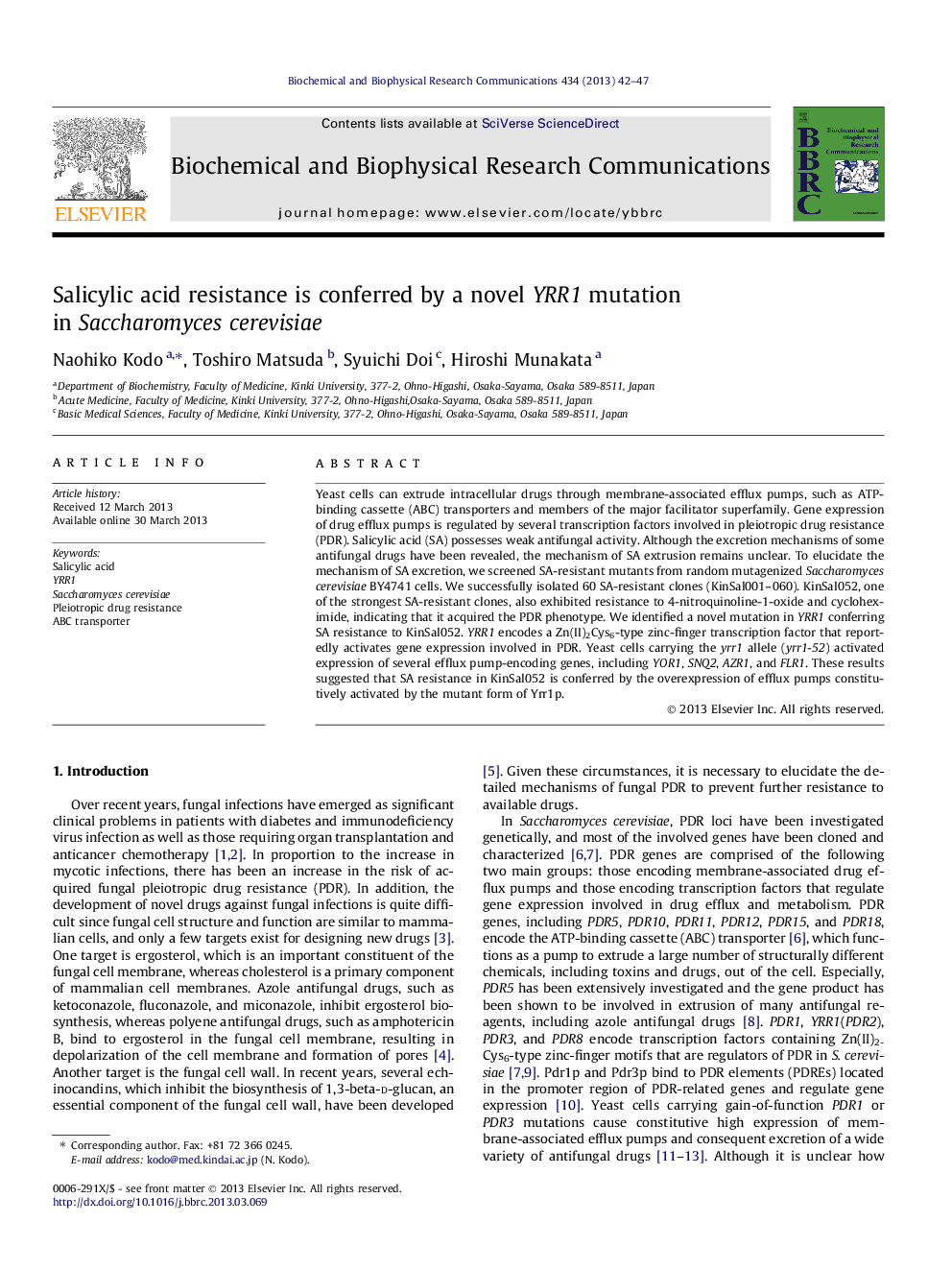| Article ID | Journal | Published Year | Pages | File Type |
|---|---|---|---|---|
| 1928849 | Biochemical and Biophysical Research Communications | 2013 | 6 Pages |
•Screening of SA-resistant clones from random mutagenized Saccharomyces cerevisiae cells.•Some mutants exhibited PDR phenotypes.•A novel YRR1 mutation conferred SA resistance.•Several genes encoding efflux pumps were up-regulated in yrr1-52 cells.
Yeast cells can extrude intracellular drugs through membrane-associated efflux pumps, such as ATP-binding cassette (ABC) transporters and members of the major facilitator superfamily. Gene expression of drug efflux pumps is regulated by several transcription factors involved in pleiotropic drug resistance (PDR). Salicylic acid (SA) possesses weak antifungal activity. Although the excretion mechanisms of some antifungal drugs have been revealed, the mechanism of SA extrusion remains unclear. To elucidate the mechanism of SA excretion, we screened SA-resistant mutants from random mutagenized Saccharomyces cerevisiae BY4741 cells. We successfully isolated 60 SA-resistant clones (KinSal001–060). KinSal052, one of the strongest SA-resistant clones, also exhibited resistance to 4-nitroquinoline-1-oxide and cycloheximide, indicating that it acquired the PDR phenotype. We identified a novel mutation in YRR1 conferring SA resistance to KinSal052. YRR1 encodes a Zn(II)2Cys6-type zinc-finger transcription factor that reportedly activates gene expression involved in PDR. Yeast cells carrying the yrr1 allele (yrr1-52) activated expression of several efflux pump-encoding genes, including YOR1, SNQ2, AZR1, and FLR1. These results suggested that SA resistance in KinSal052 is conferred by the overexpression of efflux pumps constitutively activated by the mutant form of Yrr1p.
